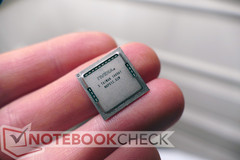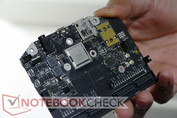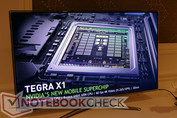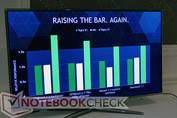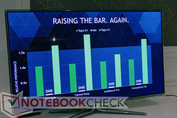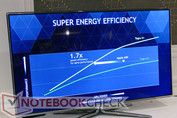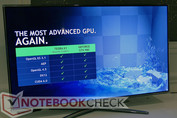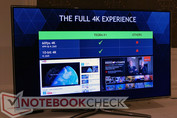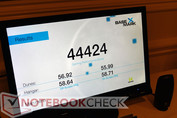It's been a year since Nvidia Tegra K1 launched and five months since the 64-bit version of the SoC was introduced. Both incorporated a 192-core GPU based on Nvidia's own Kepler architecture, familiar from desktop and laptop graphics cards. The company moved on since then, bringing newer and more efficient Maxwell architecture to the market, which was also expected to be used in Nvidia's next ARM chip.
These expectations became fulfilled today as Nvidia unveiled a new SoC called Tegra X1. It's a 64-bit capable octa-core ARM chip based on the big.LITTLE design (four Cortex-A57 cores and four A53 cores). It includes a powerful Maxwell-based 256-core GPU and is manufactured on a new 20 nm process, unlike the predecessor Tegra K1 and current Maxwell-based GPUs for desktop and laptop PCs (28 nm). The feature set is on par with GeForce GTX 980, including support for OpenGL ES 3.1, AEP, OpenGL 4.5, DirectX 12 and CUDA 6.0. The key feature highlighted by Nvidia is 4K video encoding (H264/H.265, VP9) at 60 frames per second.
Tegra X1 promises a massive increase in performance over its predecessor while providing better energy efficiency than either Tegra K1 or Apple's flagship SoC A8X (used in iPad Air 2). While benchmarks such as BasemarkX 1.1 and 3DMark 1.3 IceStorm Unlimited demonstrated a performance gain of about 50% compared to Tegra K1, GFXBench 2.7 TRex1080p off-screen showed a 75% advantage and in GFXBench 3.0 Manhattan the SoC doubled K1's score.
Moreover, Nvidia surprised the audience by running Epic Games' Unreal Engine 4 "Elemental" demo on the new SoC, claiming that it only took their developers a week to adapt the demo to the new platform. As if this wasn't enough to impress us, Nvidia reminded that Elemental on Tegra X1 only uses "a fraction" of the power required to run it on other platforms - its maximum power consumption is under 10 W. Elemental was very challenging even for high-end PCs until recently; Sony managed to run it on their Playstation 4, which was very impressive, but bringing this level of graphical detail to a relatively frugal ARM SoC could seriously change the entire gaming market, enabling much more complex and demanding games to be played on mobile devices while also saving a lot of electricity.
However, the company also says that it envisions the SoC being used in "autonomous cars, robots and drones", quoting nVIDIA's CEO Jen-Hsun Huang. It will become the heart of NVIDIA DRIVE car computers, which provide 360-degree view around the car with the aid of up to 12 onboard cameras, auto-parking capabilities and miscellaneous onboard entertainment.
We have attended Nvidia's event at CES and got pretty close to the demo setup, taking photos of the Tegra X1 test board and the graphs Nvidia has shown - they can be found below. While Nvidia didn't explicitly mentioned it, we suspect that a Tegra X1 powered SHIELD tablet is now in the works as well. The new SoC is already in production and devices with it should appear on the market in the first half of 2015.




